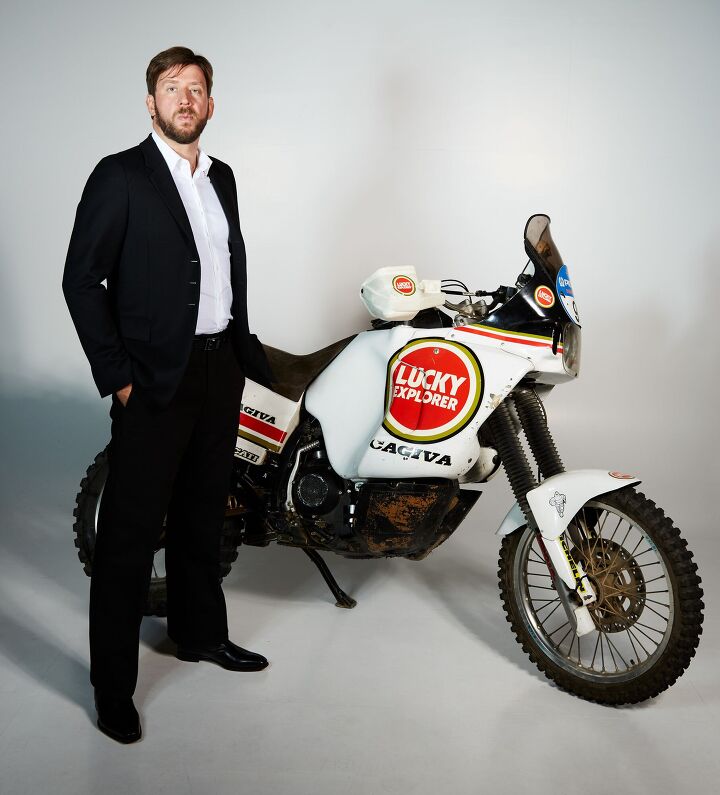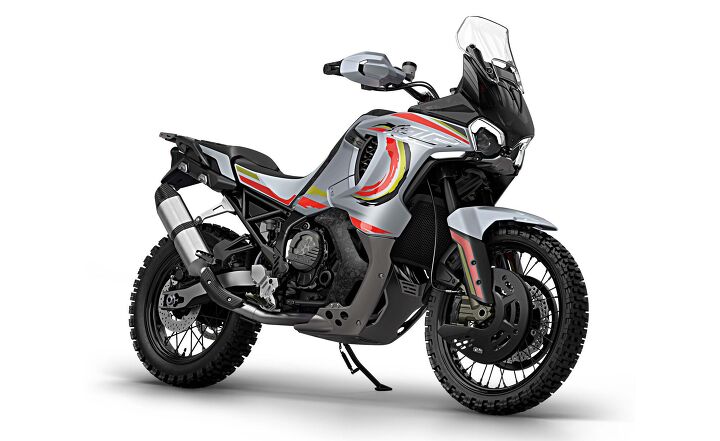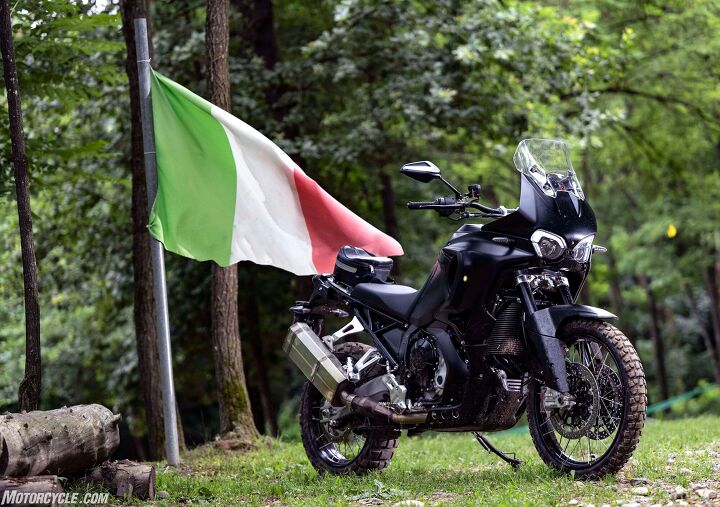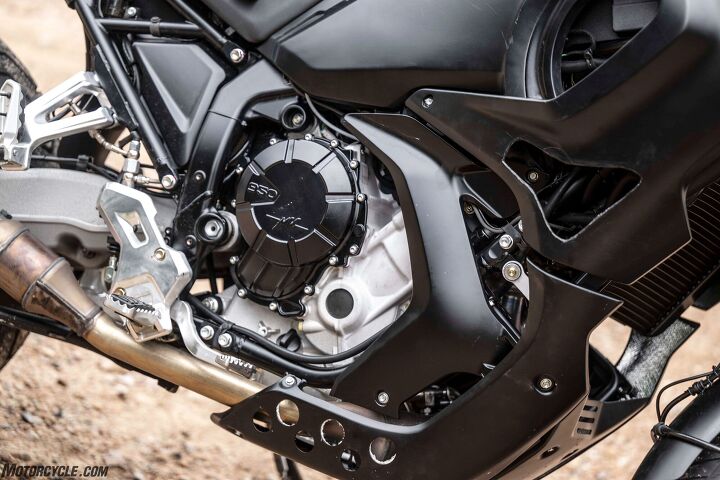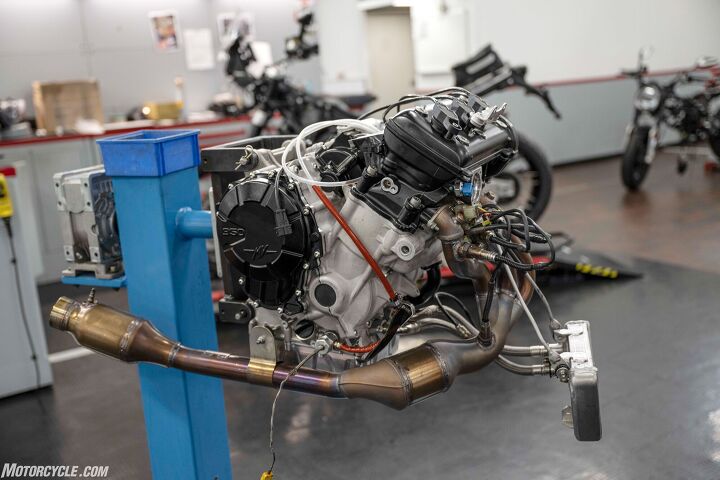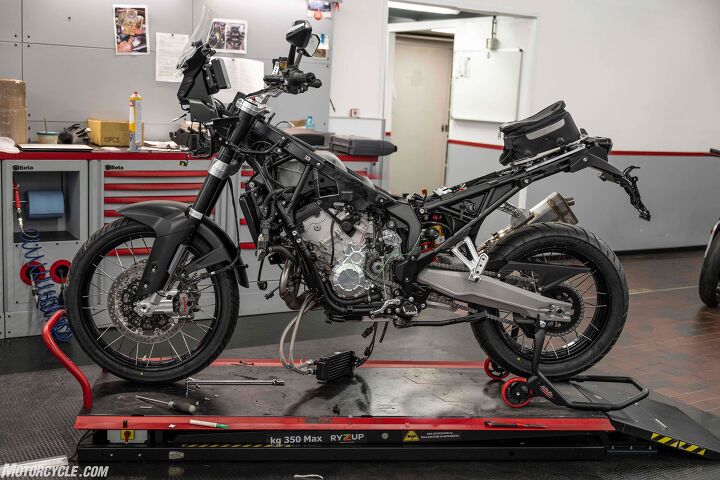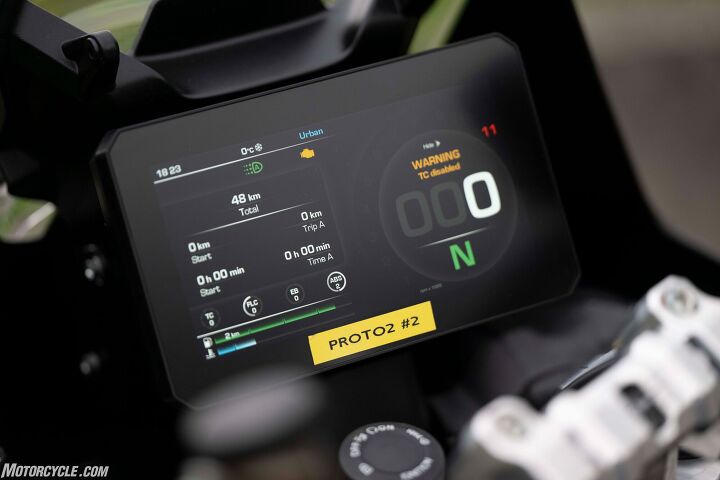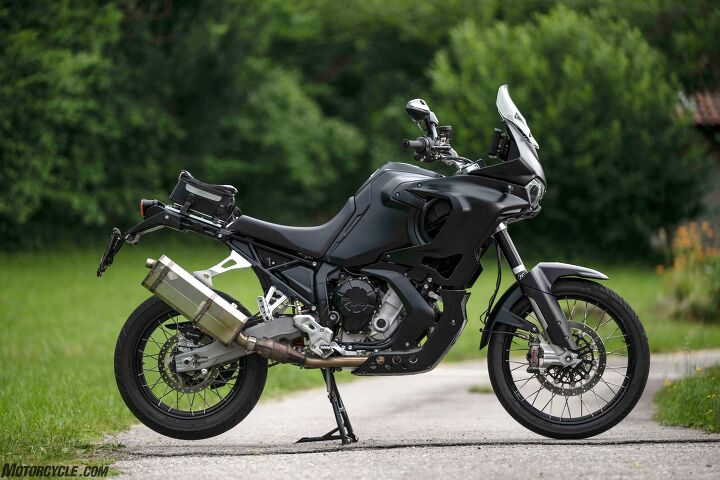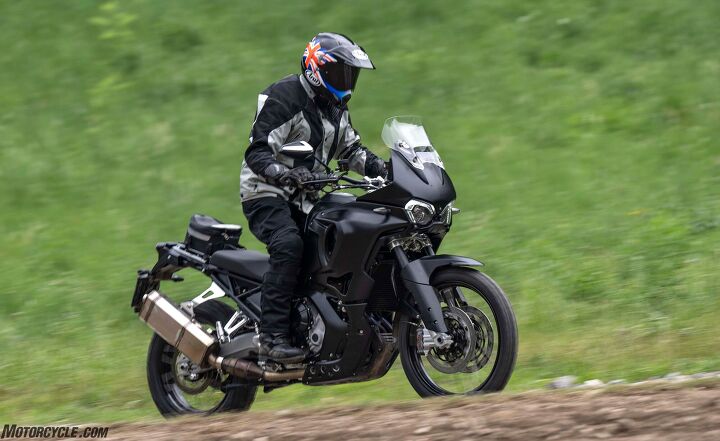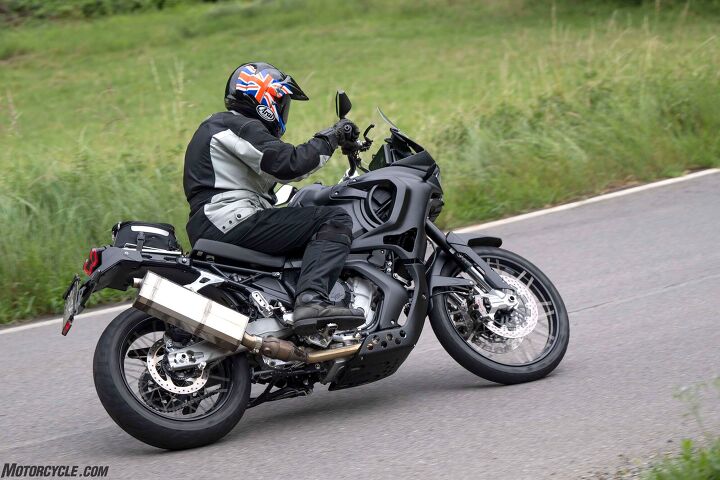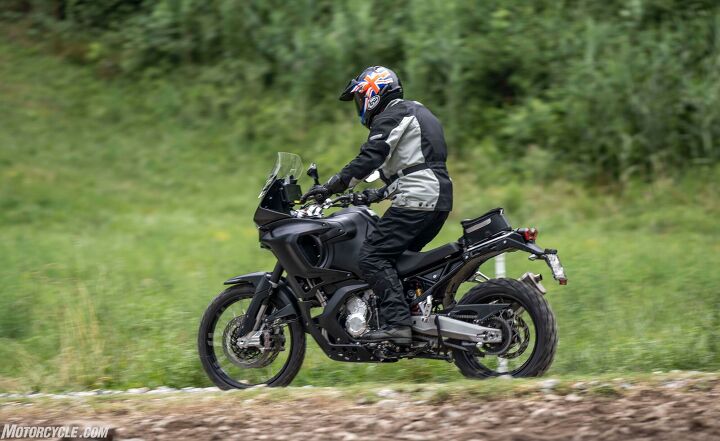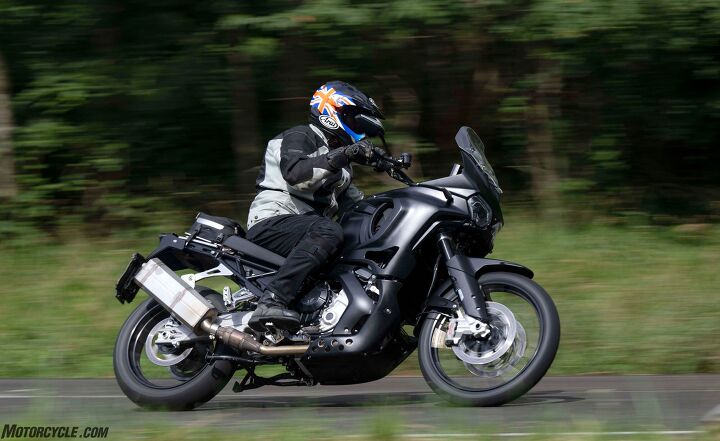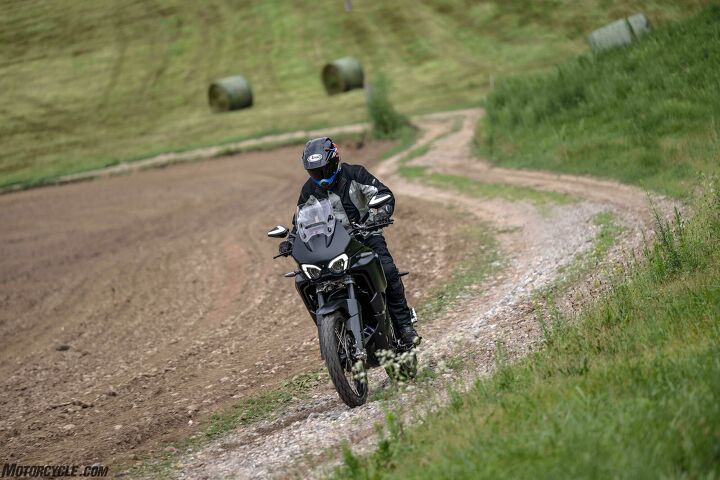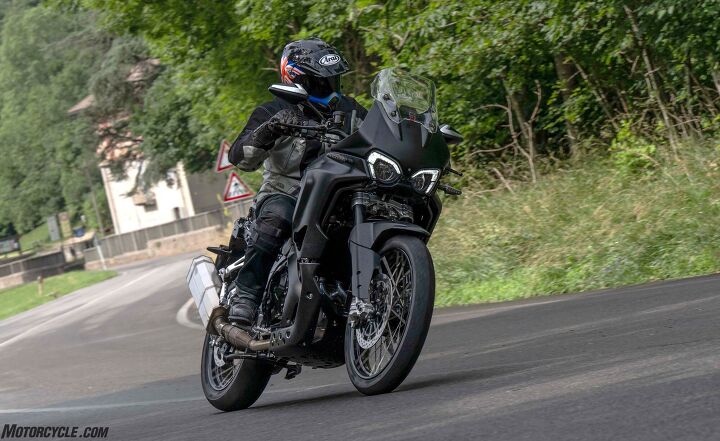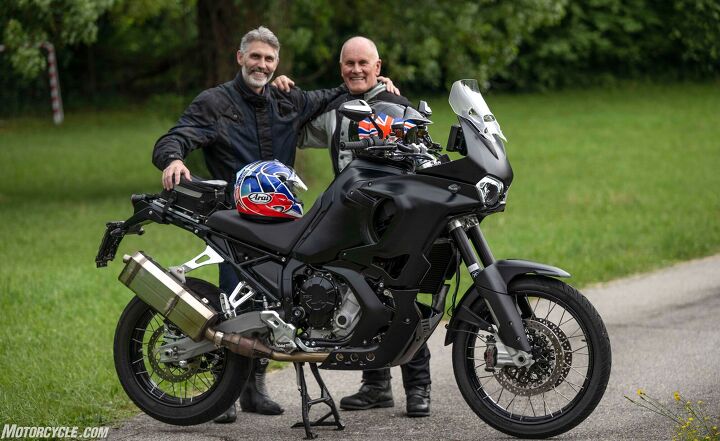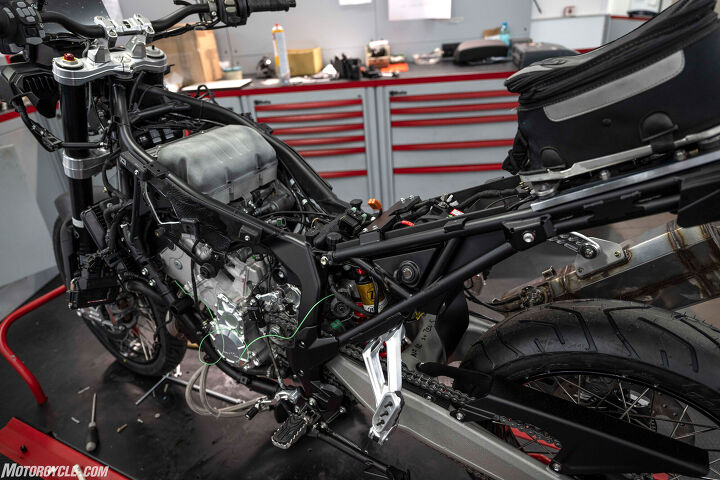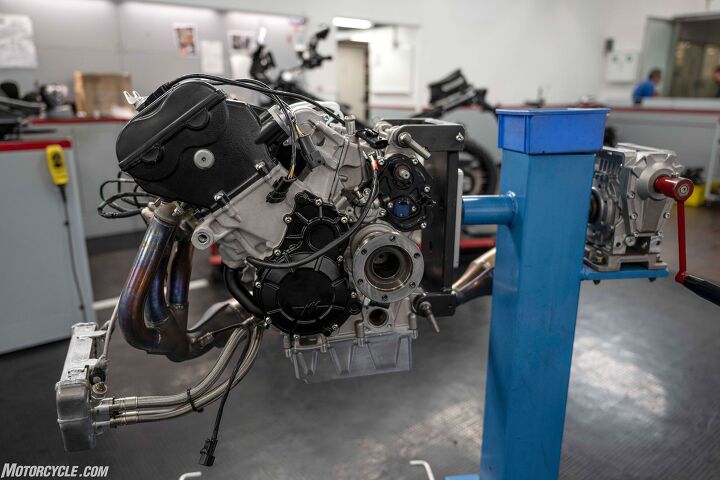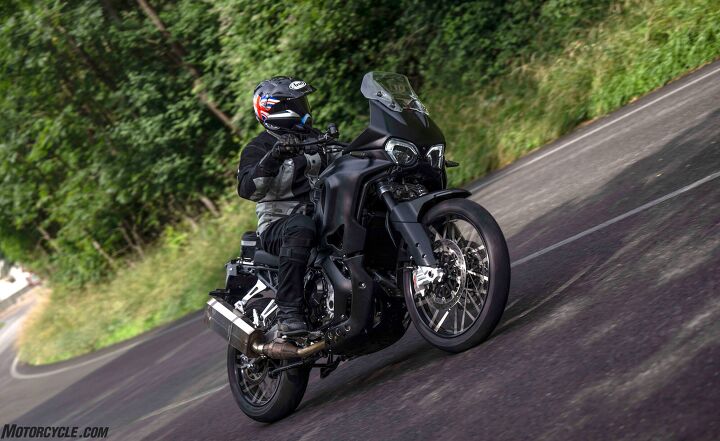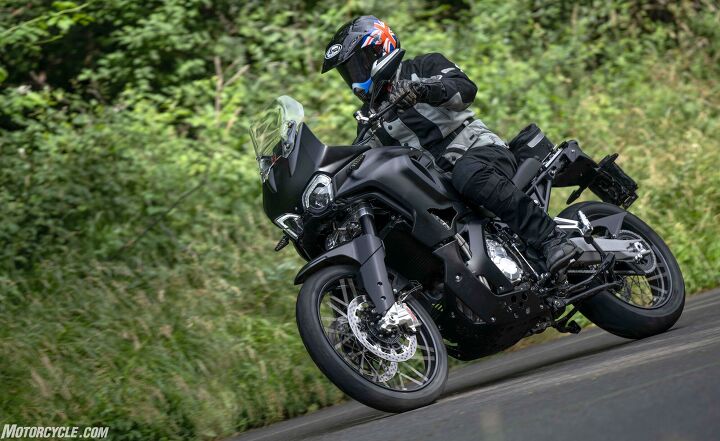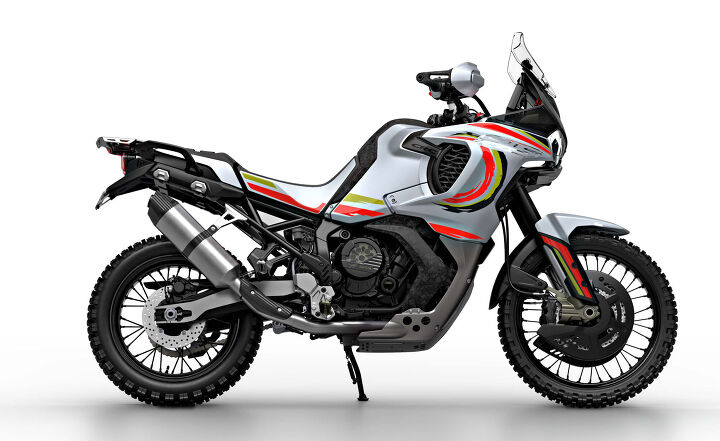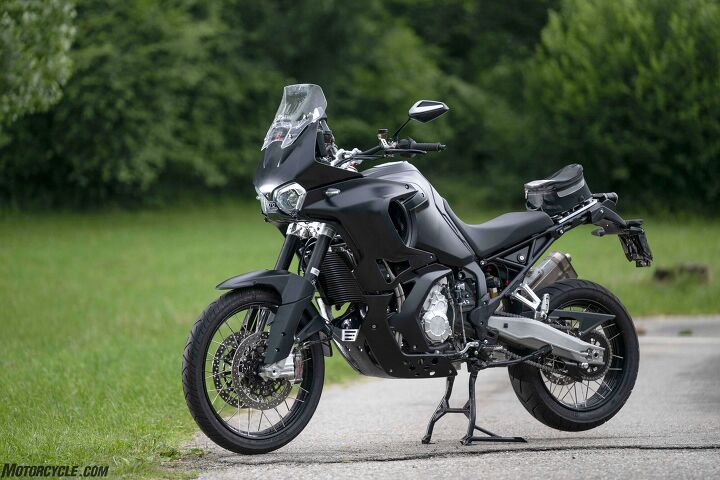Motorsports Racing News & Blog Articles
2023 Lucky Explorer 9.5 Prototype Test
These days, any manufacturer with pretensions to being a global player at whatever level in the marketplace has to have a dual-purpose Adventure model in its range, and MV Agusta is no exception. Italy’s most historic trophy brand – the so-called Ferrari of motorcycles, with 270 Grand Prix road racing victories and 75 World Championship titles in its locker, including 17 successive 500GP crowns – actually has a notable off-road heritage, too. Company founder Count Domenico Agusta’s dirt demons won successive Italian MX/Enduro titles in the 1950s and ’60s, as well as equipping the Italian team in ISDT events abroad. But after the Castiglioni family acquired MV 30 years ago, their focus for the brand was exclusively on the hard stuff – a focus which the company’s current owner Timur Sardarov is now in the process of changing.
At last November’s EICMA Milan Show, Sardarov personally unveiled two new dual-purpose models which represent a twin-pronged attack on the Adventure bike sector on the part of his Varese-based company. But rather than label them as MV Agustas, he’s instead established a completely new brand called Lucky Explorer, so named after the tribute model to the works Cagiva Elefant 900. That bike was powered by a Ducati V-Twin desmodue engine – the Castiglionis owned both brands at that time – on which Edi Orioli defeated his Suzuki and Yamaha-mounted closest rivals to win the 1990 Paris-Dakar Rally. He repeated that victory in 1994, this time against a phalanx of KTM and Honda riders, as one of a six-man Cagiva team on updated versions of the same bike. Cagiva’s main sponsor both times was cigarette company Lucky Strike, so for by then already inevitable reasons, the customer lookalike street version launched in 1991 was called the Cagiva Elefant 900ie Lucky Explorer, but minus the Lucky Strike logos. Hence Sardarov’s resurrection of the name, complete with a color scheme for its bikes that’s heavily reminiscent of Orioli’s race winners.
Some inevitable confusion was already sown by Ducati’s simultaneous launch at EICMA 2021 of its DesertX Adventure bike that’s now beaten the MV – sorry, Lucky Explorer – into production, and with a near identical paint job, too, since each company reckons it’s got the intellectual rights to this particular piece of Latin heritage. So why not call it a Cagiva, then? Apparently there’s a dispute between Sardarov and MV’s former owner Giovanni Castiglioni as to who exactly owns that name, too….!
So Lucky Explorer it is, and the project includes not one but two ADV models, both representing significant steps for MV. The smaller bike, named the Lucky Explorer 5.5, is the first fruit of MV Agusta’s partnership with Chinese firm Qianjiang/QJ, owner of the Benelli and QJMotor brands, and Harley-Davidson’s partner in developing and producing a new entry-level 353cc single-cylinder model family that’s due to be launched anytime soon. The LXP [MV’s internal code-name for the models] 5.5 features a 550cc parallel-twin motor that’s set to power a whole range of entry-level MVs in the future. This model is due to be launched next January, to coincide with the debut (or return, depending on which way you look at it) of a three-rider Lucky Explorer team in the 2023 Dakar Rally in Saudi Arabia. It’s not been revealed yet which bikes they’ll be riding – for sure it won’t be anything built in Varese – but the thing that’ll matter most will be the Lucky Explorer livery they’ll be riding in, says MV Agusta’s R&D Director Brian Gillen [see interview below].
The second bike launched at EICMA, the Lucky Explorer 9.5 that’s due to enter MV dealer showrooms around the world next April, will be the first in a new family of MV Agusta models powered by an all-new 931cc three-cylinder engine which Gillen’s guys have been working on since 2016. Though sharing the same overall format with its slant-block cylinders inclined forward at 35° as the existing in-line triples powering the majority of MV’s range, including the F3 RR, Brutale 800, Dragster 800, Turismo Veloce, and Superveloce, the motor equipping the LXP 9.5 is a completely new design which, according to Gillen, contains just two components shared with the firm’s existing 800cc motor – the valves, and valve caps. “Everything else is new,” he says. “The existing 800 engine is derived from the 675cc design we started out down the three-cylinder trail with ten years ago with the F3. The new generation 931cc engine will power a wide range of new models we’re currently developing, up to and including some high-performance ‘F’ bikes which represent MV’s core heritage. But the first model to reach our customers carrying this engine will be the Lucky Explorer 9.5, with a high torque version of the motor which by definition will have reduced outright power compared to the sport bikes coming later on.”
Invited to Varese ahead of three other journalists for an exclusive look at and first ride on the prototype Lucky Explorer 9.5, I found a bike which although very much a work still in progress, is already a pretty individual package. Engine first, and in creating the new three-cylinder motor, Gillen’s R&D team numbering a healthy 74 people in all split between its Varese HQ and the satellite CRC development outpost in San Marino, produced no less than seven different configurations of the engine before deciding on dimensions of 81 x 60.2 mm for a capacity of 930.63cc (versus 79 x 54.3 mm for 798cc for the existing smaller displacement 800/675 motor). The all-new 120°-forged steel crank rotates backwards just like on most modern MotoGP bikes, which MV Agusta says it was the first to pioneer on the road.
The new engine’s forged steel conrods carry lightweight forged aluminum pistons with short skirts and Heron-type crowns which are dished to incorporate part of the combustion chamber. These run in the Nikasil-lined bores of the cylinders cast integrally into the upper crankcase half. Because the emphasis on this version of the new 931cc engine is on torque rather than power, despite the extra room provided by the bigger bore, it retains the same paired steel valves (so, not radial, as on its sister F4 four-cylinder motors) as on the older smaller-capacity engine, namely 31.8mm inlets and 26.7mm exhausts set in the brand-new cylinder head at a very flat 23° total included angle. As on the previous 800/675 motor, there’s a vibration-reducing balance shaft driven directly off the crank, while the oil and water pumps are driven by two small gears running off the straight-cut primary drive pinion, which are integrated into the all-new diecast aluminum crankcase castings. These have internal oil and water passages to save space and weight, and to give a cleaner appearance.
Its claimed 121.4 hp peak delivered from the crank at 10,000 rpm is already more than any of its potential twin-cylinder rivals in the middleweight ADV category, like the 889cc Husqvarna Norden 901/KTM 890 Adventure R, the 937cc Ducati DesertX, and the 1084cc Honda Africa Twin, produce. Strangely, perhaps, MV doesn’t consider the three-cylinder Triumph Tiger to be valid competition for the LXP 9.5: “While it doesn’t do anything bad, we just don’t think it’s exceptional in any one area,” says Brian Gillen. So there, Mr. Bloor – although the British company’s owner may derive some comfort from that snub from his sales figures!
The Lucky Explorer’s broad spread of torque, peaking at 7,000 rpm with a claimed 75.2 lb-ft., is also better than all the rest, save for the larger capacity 77.4 lb-ft. Honda. At 4,500 rpm there’s already 69 lb-ft. of torque available on the LXP 9.5, and this lasts to 9,500 rpm after peaking 2,500 rpm lower. This is delivered to the ground via a cassette-type six-speed transmission that’s extractable on the right side of the motor and also all-new, but with the option, when it reaches production, for customers to choose MV’s Rekluse automatic clutch that was established on the Turismo Veloce models, or potentially also a Cyborg electro-actuated semi-automatic transmission – an intelligent move, given Honda claims 45% of Africa Twins sold in Europe use the firm’s DCT semi-auto transmission.
This ultra-compact motor, whose closed-deck crankcases have the Nikasil-lined cylinder bores cast integrally into their upper half, weighs just 119 pounds without throttle bodies, which is only 2.6 pounds more than the older, smaller motor. It sits in a twin-loop steel frame comprising a mixture of forged and extruded sections, with an aluminum twin-sided swingarm – is this the first modern MV without a single-sided one? – delivering a fairly long 62.2 inch wheelbase. Besides 9.1 inches of ground clearance, there’s a proper off-road-friendly 21-inch front wheel and an 18-inch rear, albeit both cast aluminum and perhaps surprisingly shod with tubeless Bridgestone A41 tyres (AX41 knobblies for running off-road) rather than MV’s more usual Pirelli/Metzeler fitments – a 90/90-21 front and 150/70-18 rear. Those wheels carry twin 320mm front discs gripped by Brembo’s range-topping radially-mounted Stylema one-piece calipers, with a large 265mm rear disc and twin-piston caliper, and Continental’s switchable Cornering ABS fitted for Euro 5+ compliance.
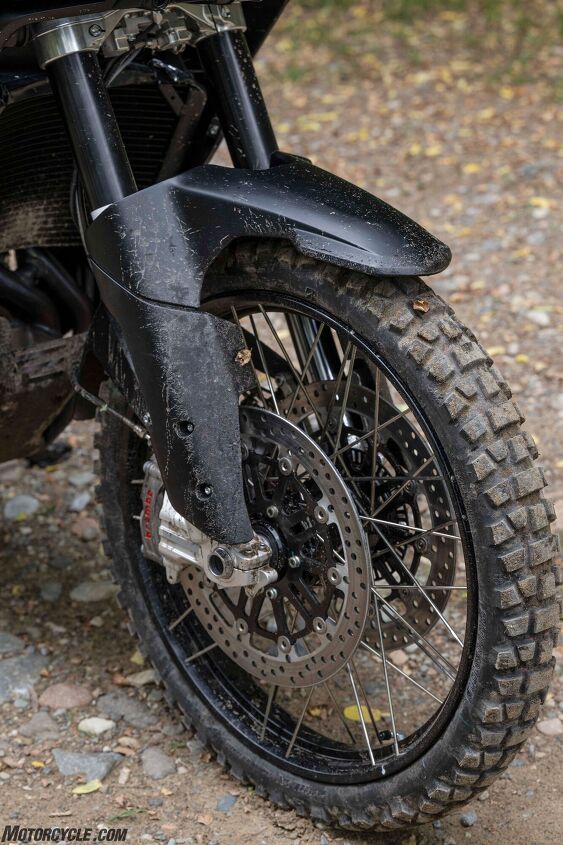 Suspension comes courtesy of Sachs, with a 50mm upside-down fork that’s adjustable for spring preload and rebound damping in delivering a hefty 8.7 inches of wheel travel, with a fully adjustable rear monoshock providing 8.3 inches of travel. It’s planned that there should also be a semi-active electronically adjustable Sachs option when the bike reaches production. But according to Brian Gillen, the well-worn prototype I was riding was mechanically and stylistically exactly as signed off for production, just lacking 70% of the various electronic packages’ refinement as a work in progress – hence the fact there were just two riding modes available when I rode it, Urban and Touring, out of the four being included as standard (plus Off-road and Custom) for both on and off-road use, courtesy of the 6-axis Continental IMU. By the way, the large 7-inch TFT dash on the bike wasn’t working for my ride, so I had no rider aids at all available.
Suspension comes courtesy of Sachs, with a 50mm upside-down fork that’s adjustable for spring preload and rebound damping in delivering a hefty 8.7 inches of wheel travel, with a fully adjustable rear monoshock providing 8.3 inches of travel. It’s planned that there should also be a semi-active electronically adjustable Sachs option when the bike reaches production. But according to Brian Gillen, the well-worn prototype I was riding was mechanically and stylistically exactly as signed off for production, just lacking 70% of the various electronic packages’ refinement as a work in progress – hence the fact there were just two riding modes available when I rode it, Urban and Touring, out of the four being included as standard (plus Off-road and Custom) for both on and off-road use, courtesy of the 6-axis Continental IMU. By the way, the large 7-inch TFT dash on the bike wasn’t working for my ride, so I had no rider aids at all available.
But in production guise, this dash will have Bluetooth connectivity as standard, and with a single injector on each of the three 50mm Mikuni throttle bodies operated via a full Mikuni ride by wire digital throttle, the Eldor ECU will offer a choice of three preset maps – Sport, Touring, and Off-road – as well as a fourth Custom map which the rider can tune to suit his or her tastes. Those personalization possibilities will extend to altering the engine torque curve in line with power output (two levels), rev limiter cut-in point (Hard or Soft), throttle sensitivity (three levels), engine braking (two levels), engine response (two levels), and traction control (eight levels, and also disengageable). MV will also offer front wheel lift control and cruise control. Additionally, an EAS 2.0 two-way quickshifter complete with an auto-blipper for two-way clutchless powershifting, that was absent from the test prototype I rode, will also be included as standard, says Gillen. If you’ve ridden any of their recent bikes you’ll be able to confirm that MV’s engineers know what they’re doing electronically, thanks to their close collaboration with nearby electronics supplier Eldor, so I’m looking forward to riding the bike again once those refinements are complete.
At 33.5-34.3 inches high the Lucky Explorer’s adjustable seat is tall but attainable for climbing aboard and dismounting via the left peg for a 5’10” rider like myself – both a side-stand and center-stand are included as standard – and once aboard, I found myself nestling down into the well-worn but accommodating seat which helps deliver a pretty spacious riding stance. Despite the large 5.3-gallon fuel tank – no consumption data is available yet while MV finalizes the electronics package – the MV triple felt as slim between the knees as the KTM 890 Adventure and Honda Africa Twin I’d ridden recently, denoting the triple engine’s compact build and the fact it’s been well positioned within the wheelbase. I could put both feet on the ground at rest – not always feasible on certain Adventure bikes – and despite the inevitably greater width of the in-line Triple engine, the weight felt to be in completely the right place: there was not even a slight sense of top-heaviness as on some multi-cylinder off-road models.
Indeed, the bulk of the LXP 9.5 felt very concentrated architecturally, rather like the well-balanced Honda it definitely resembles to sit on, which combined with the accommodating seat, gives you the impression of being part of the bike. Besides being relaxing and confidence inspiring, this also makes it easier to change direction – this is a good-steering motorcycle, thanks partly to the rider packaging and thus the weight distribution, but also to the 4.7 inches of trail on the steering geometry, which keeps that 21-inch front wheel nice and stable when riding on tarmac. Yet despite the long wheelbase, the LXP felt light and maneuverable in flicking easily from side to side through successive second-gear bends along a twisty hillside road, as I found in numerous stretches of my ride following Brian Gillen up into the junior Alps north of Varese, towards the Swiss border.
There, in tighter turns I found the LXP pinpoint accurate in its low speed steering – way better than the norm for ADV bikes with big front wheels like this one’s. I was also impressed with the tarmac grip on the angle of the Bridgestone tyres – you don’t have to make allowances for their dual-purpose nature when hustling through bends on the LXP, and nor do they drum noisily despite their off-road-friendly tread pattern, when running on tarmac at any sort of speed. This’ll be a great mileater of a bike, which I suppose puts it up against that paragon of multi-functional motorcycling, the BMW R1250GS and its like. I can’t say at this stage of its development if the Lucky Explorer will be fit for purpose in providing a valid Latin alternative to that Teutonic all-rounder, but the signs are promising, despite its smaller engine capacity, and MV’s decision to opt for chain final drive rather than a shaft.
For the torquey triple motor makes the Lucky Explorer super-simple to ride – you can let the revs run down as low as 2,500 rpm in sixth gear, and it’ll pull cleanly away wide open from there to the 10,500 rpm soft-action rev-limiter with no trace of transmission snatch. That’s a forgiving engine par excellence – and to make it even better, as the revs build, you’ll be serenaded by the great-sounding exhaust which Brian Gillen assured me was already Euro 5+ legal. So, it’s a high-torque motor with added music, which you especially notice once the revs break through the 7,000 rpm mark, and you can feel the engine acceleration get even stronger as the combination of the exhaust valve, cam timing and valve lift send it streaking towards the limiter. This is a true old fashioned MV Agusta sportbike if you choose to rev it out – and that augurs well for the high performance models Gillen & Co. are busy concocting with this new 931cc motor.
Because the LXP 9.5 engine is so flexible and smooth in response – and by the way, pickup from a closed throttle is impeccable, with no trace of any snatch or jerk – I found myself holding third gear for literally miles on end, using the ample reserves of low and mid-range torque in running up and down the rev band as the road dictated. Nice. Less pleasant was the clutch action, which was rather stiff and heavy, making town work tiring for my left hand. More work is needed on making the transmission user friendly when you do have to shift gear or work the clutch.
Ride quality was excellent – plush, almost – thanks to the long-travel, fully adjustable Sachs suspension’s controlled, compliant response to bumps and lumps in the road surface – again, this will be an excellent bike for the long haul. And in hauling down a motorcycle weighing 467 pounds dry according to Gillen, split 51/49% – or 487 pounds with half a tank of gas and ready to roll – from any significant speed, the Stylema Brembos were as impeccable in operation as they are on the 200 hp-plus Superbikes-with-lights they were developed to stop. I must admit to looking askance at them when I first noticed they were fitted to this dual-purpose bike, but contrary to expectations they’ve been set up very well to be capable of modulation at low speeds, with a light initial response if you just want to cram off a little speed for a turn, but then all-out stopping power when needed if you squeeze hard on the lever. The large 265mm rear disc was set up just as I wanted it to be, too, with lots of feel.
That was important too when riding the LXP 9.5 off-road, as I was able to do for just few k’s of gravel roads interspersed with some deeply rutted rocky road surfaces, and a couple of pools of water. But with no dedicated off-road riding mode available on the ECU, I’ll admit to being reluctant to push things too far – although standing on the grippy footrests the LXP 9.5 felt well balanced and forgiving, with the wide handlebar ideally suited to my height in aiding controllability, as the long-travel suspension soaked up the terrain’s road rash. It was enough to convince me this will most likely be a great ride on green lanes and unmetalled hard surfaces, though the jury’s out about anything more challenging, especially mud or sand.
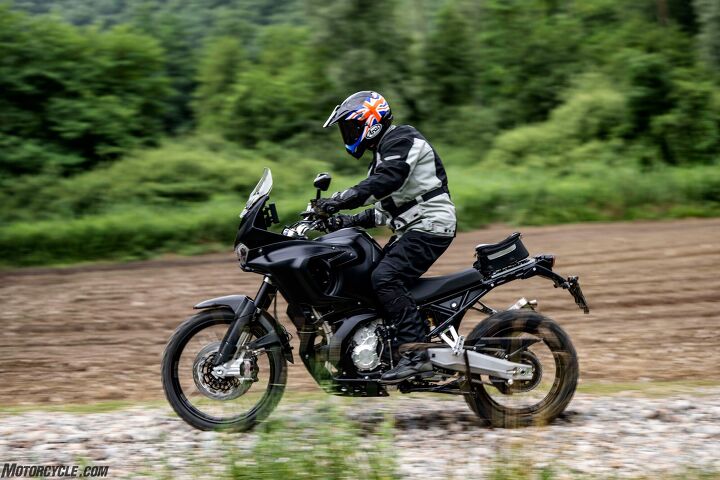
So, MV Agusta is well on the way to delivering an exceptional multi-purpose motorcycle when the Lucky Explorer 9.5 reaches dealer showrooms next year. But the Elefant in that particular room will be its price. With Ducati’s DesertX that’s likely to be its greatest rival costing $17,095, expect the faster, more powerful and torquier Lucky Explorer 9.5 to be at least $18,000 when it goes on sale nine months from now. Will its greater performance be sufficient to attract customers to pull out their credit cards? Only time will tell – but as my taster of a test of this work-in-progress prototype confirmed, it’s certainly going to be worth waiting to see.
But wait. This is a 931cc three-cylinder motorcycle, and history has already shown us how a smaller Triple was able not so long ago to mix it very successfully with larger capacity opposition. For back in 2006 when Triumph launched the 675 Daytona on the market, it immediately stamped itself as a middleweight Supersport motorcycle with a unique technical format that could take it to the one-litre Superbikes – both twins and fours – on road and track alike, and repeatedly defeat them in same-day giant comparo tests, especially when its lower retail price was taken into account. At the point that, say BMW’s R1250 GS is priced at $19,870, would an $18,000 Lucky Explorer 9.5 have any chance of attracting customers away from the heavy brigade? Well, after riding it in prototype form, I have to say that’s a serious possibility. Let’s wait and see, shall we…?!
MV Agusta’s Brian Gillen SpeaksMV Agusta’s American-born R&D Director Brian Gillen, 47, is himself an expert offroad rider who heads up the team of engineers charged with developing the Lucky Explorer family. Let’s ask him to tell us the story so far of how it came about…. “This dual-purpose product has actually been a long time coming, because we’ve been looking at getting into the Adventure market on and off since the end of 2009, when Claudio Castiglioni was still with us. At that time it was a 90-degree V-twin project, because we were working on an all-new MV Agusta twin-cylinder range which included this type of bike. But then we had the upheaval of Claudio passing, so the twin-cylinder project was dropped. In 2016 we began work on designing this new larger-capacity three-cylinder engine, and realising that the market had moved on from ultra-Sports bikes like the F-type MVs, so that the biggest focus was by then on the Adventure market, we decided to use that as the basis for this bike. So in designing the 9.5 engine, the first thing we wanted to look at was trying to make an engine that had the possibility to be even more versatile than we’d originally intended, which we could use in an Adventure bike.” “So just as we produced the 800cc derivation of the original 675 triple, which should be able to simply grow into the existing models, in 2016 when we began this project our aim was to design a brand new engine that could fit into what at that time were the existing products. So, sufficiently compact despite being 50% bigger in capacity than the original 675, to fit inside the envelope of that bike’s frame. This meant getting the maximum displacement we could, while maintaining the same outside wrapping of the motor, and despite using completely new crankcases – there is no carryover from the old three-cylinder engine to this new one. It was a clean sheet design – the only things the two have in common are the valves, and valve caps.” “We first had the engine running at the beginning of 2021, and this was the high torque version for the Lucky Explorer. Though we’re also working on high performance versions of this new engine, we also knew that in the Adventure market the absolute power figure is not at all important – it’s more important to have a maximum amount of torque, with the torque curve as flat as possible, and in my opinion we’ve hit the target.” “We have the same essential format as the 800, but all the dimensions are different – everything is completely new. We have 81 x 60.2 mm dimensions, but that’s about the only thing that will remain in common between this high torque Adventure version of the motor and the future, sportier variants we’re also working on. Starting out, we made seven different configurations of the engine in terms of bore and stroke, before finally settling on one that could give us the biggest envelope of performance in satisfying both of those, let’s say, extremes – so the F-Sport high power version would be one extreme, and the high torque Adventure bike would be the other.” “We’d planned all along to use the evenly spaced 120-degree crankshaft we have in it now, rather than a big bang 180-degree motor like the old Laverda Jota, because to get the smoothness we wanted on the highway, it’s better to have a 120-degree crank with fewer vibrations. The rev limiter on this engine is at 10,500 rpm, and we’ve aimed to develop an extremely linear power curve, allied to a very flat torque curve.” “The mechanical part of the engine design is 100% fixed, but right now we’re only about 30% along the way in terms of electronics, because the map that you were using today, is the one that we developed on the engine dyno. So this means we haven’t done any work on transitory throttle settings, on part-throttle use, and we also haven’t done any work below 3,500 rpm, because that’s the slowest we spin the engine on the dyno. So this means we have to be really hands-on in getting the low rpm settings established.” “The mechanical architecture of the transmission system on this engine is quite different than the older one. Both the 800 and 675 engines have shifter forks that are coaxial on the shift drum, whereas this new engine has the shift fork riding on independent pins. This is to reduce the friction and mechanical drag, so as to get a smoother shift. It has a slipper clutch – but while you didn’t have it on this prototype, it’ll obviously have a two-way speedshifter as standard when it reaches production.” “Compared to other three-cylinder engines on the market the new 931cc engine in the Lucky Explorer is just as compact as the 800/675 one is. Indeed, this engine will plug directly into an 800cc MV Agusta chassis – the attachment points are the same. At its widest point it’s 369.9 mm wide, and the height from the bottom part of the oil sump to the top of the valve cover with the coils, is 493.8 mm. I believe that’s pretty compact for a 931cc engine! It weighs 54kg without throttle bodies, which is only 1.2kg more than the older motor, and more than anything else that’s because of the bigger steel crankshaft. And despite the larger capacity, on this high torque application we’re using the same size 50mm throttle bodies as on the 800.” “We have several different partners on the electronics, because these have become so complex both individually and in relation to one another. Where in the past you had an ECU that handled the electronic fuel injection, and that was it, now everything has gotten so much more complex because of the integration of all the different vehicle systems. And so from the engine calibration side, we have Eldor who is our partner, and they design and develop the hardware, and also determine the software strategy directly for us. So we have the resident engineer of Eldor here at MV Agusta, who sits with our calibration engineers in our electronics department jointly working on doing all the calibration here at MV. So all of the testing and development is done here. And then we have other electronic partners like e-Novia in Milan who design and develop the inertia platform, ensuring their software works together with the engine ECU in order to have the right range of performance. And then we have another e-supplier in Continental for the Cornering ABS, which ties into our MCU via CANBUS, that’s acting as the central communication hub between all the other subsystems. In fact, out on the road we have seven different ECUs in operation in various points on the bike, so we need that coordination to take place.” “The importance of electronics on a modern motorcycle like the Lucky Explorer makes the supply of semi-conductors very important. We were extremely affected by supply problems with these almost 12 months ago, but now it seems like this is starting out to be less of an issue as production is building up again worldwide. The biggest problems today are just general raw materials, things we never thought we’d have problems with, like aluminum and steel for forgings, for foundries – it’s really incredible. But it’s a very volatile situation which keeps us on our toes in addition to everything else! “The launch for the production ready version of the Lucky Explorer 9.5 will be at EICMA this November, and deliveries will begin in April next year. However, before that we’ll have the 5.5 first, which will enter production at our partners in China at the end of January. “It’s impossible to tell until the bike goes on sale, but we hope our customers are going to ride the bike off-road quite a bit, because we’re spending a tremendous amount of energy and development time to make sure that the bike is in the top of its class in offroad use, and there’s no hiding what our targets are. Our targets off-road are the Honda Africa Twin, and the Ducati DesertX. Those are the bikes that we’ve ridden offroad that are the best balanced and easiest to use in an offroad environment, leaving aside the Yamaha Tenere which is in a different class of motorcycle. The Triumph is obviously the other three-cylinder bike, and while it doesn’t do anything bad, I just don’t think it’s exceptional in any area. “In terms of MV Agusta’s future direction, from a volume sales standpoint for sure the Adventure class nowadays gives us more opportunity to sell a greater number of bikes, simply because the market share is so much bigger in that category than in the Roadster or even hardcore Sport bike categories. “To emphasise our offroad heritage via our Cagiva Elefant background, we’re entering a Lucky Explorer team of three riders in the 2023 Dakar Rally in Arabia. The bikes will be branded as Lucky Explorer, but while I’m not yet able to reveal which motorcycles they will be riding, two of the bikes will be different from the third, but all will be branded as Lucky Explorer. This will obviously coincide with the launch of the customer version of the twin-cylinder Lucky Explorer 5.5, and then a couple of months later the 9.5 will be available. So from a marketing standpoint we believe this will be very timely, to demonstrate that Lucky Explorer is definitely committed to respecting our Dakar Rally heritage. “The fact that this is a 931cc motorcycle reflects the fact that we’re trying to span both the Middleweight and Heavyweight segments of the Adventure Touring market. So this has two main segments – one is the Middleweight guys between 800cc and 1,000cc, and then we’ve got the Heavyweights between 1200cc and so far the 1290cc of the KTM. Our goal with the Lucky Explorer project is to be best in class in the Middleweight sector in terms of weight, neutral handling and suspension, and at the same time, be a competitive alternative to the bigger displacement bikes in terms of torque and power compared to weight. So if there’s people out there who want a Heavyweight bike in terms of performance, but don’t want the extra mass and the difficulty in handling that, they’ll soon have an alternative. What we’re trying to do is to be the best of both worlds, by trying to match a big enough power package in terms of torque and horsepower, while still having the benefits of the Lightweight bike’s handling, braking and steering. |
| MV Agusta Lucky Explorer 9.5 Prototype Specifications | |
|---|---|
| Engine Type | Liquid-cooled four-stroke Inline-Triple, 12 valves, DOHC with mechanical chain tensioner and DLC tappets. |
| Displacement | 931cc |
| Bore per stroke | 81 mm x 60,2 mm |
| Compression ratio | 12.5:1 |
| Starter | Electric |
| Horsepower | 121.4 hp at 10,000 rpm (claimed) |
| Torque | 75.2 lb-ft. at 7.000 rpm (claimed) |
| Clutch | Wet multidisc hydraulic clutch + SCS (Smart Clutch System |
| Transmission | Electro-actuated six-speed gearbox with electronic quick shift MV EAS (Electronically Assisted Shift Up & Down) |
| Frame | Double beam frame structure, composed by high-tensile steel pipes and forged components. Bolt on double cradle |
| Subframe | Trellis structure, composed by high-tensile steel pipes and forged components. |
| Swingarm | Aluminum die cast double-sided swingarm |
| Front Suspension | 50mm Sachs inverted hydraulic fork with electronic rebound, compression damping and spring preload external and separate adjustment. 8.66 inches of travel. |
| Rear Suspension | Progressive, Sachs single shock absorber with electronic rebound and compression damping and spring preload adjustment. 8.27 inches of travel |
| Front Brake | Double floating disc. Ø 320 mm (Ø 12.6 in.), with steel braking disc and flange, dual radial-type monoblock Brembo Stylema caliper, with four pistons Ø 30 mm (Ø 1.18 in.) |
| Rear Brake | Single steel disc with Ø 265 mm (Ø 10.43 in.) diameter Brembo caliper with 2 pistons – Ø 30 mm (Ø1.18 in.) |
| ABS System | Continental MK100 with RLM (Rear Wheel Lift-up Mitigation) and cornering function. |
| Front Tire | 90/90 – 21 |
| Rear Tire | 150/70 – R 18 |
| Electronics | TFT 7” Full HD Dashboard – Bluetooth and Wi-Fi connectivity Cruise control Launch control 8-level Traction Control- GPS sensor Immobilizer Full led headlight with DRL and bending function Full led tail light Fog light MV Ride app with turn by turn navigation system, engine and vehicle setup. |
| Wheelbase | 62.2 inches |
| Overall length | 89.37 inches |
| Overall width | 38.58 inches |
| Seat height | 33.46/34.25 inches |
| Ground clearance | 9.05 inches |
| Trail | 4.64 inches |
| Dry weight | 485 lbs. (claimed) |
| Fuel Capacity | 5.28 U.S. gallons |
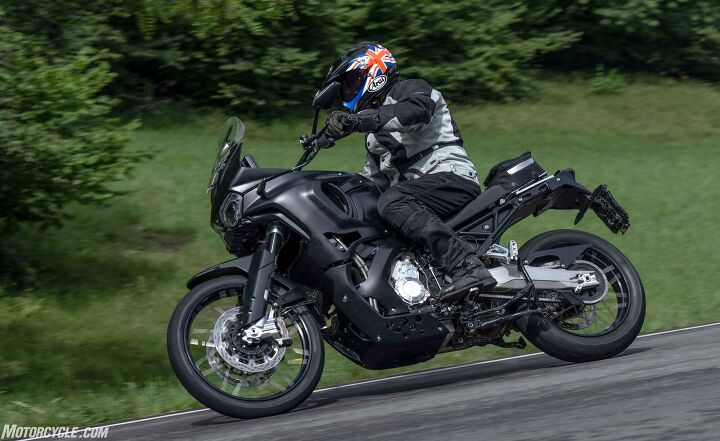
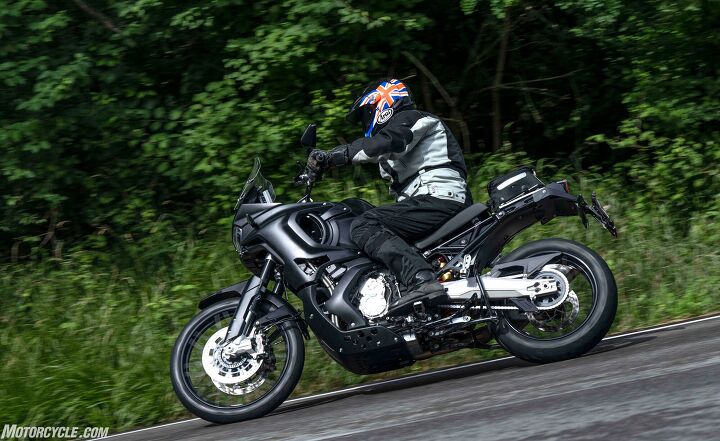
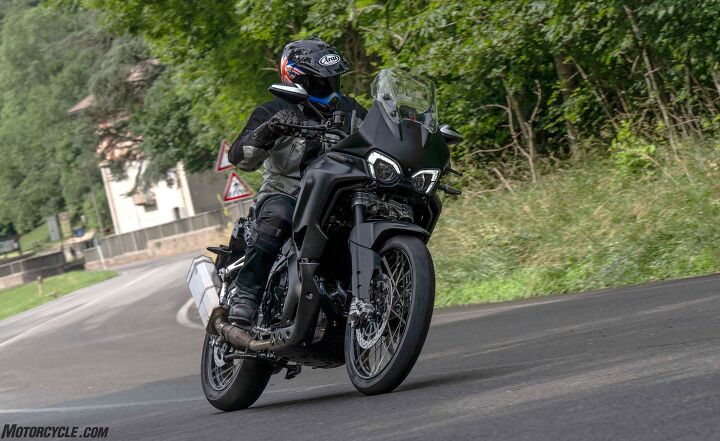
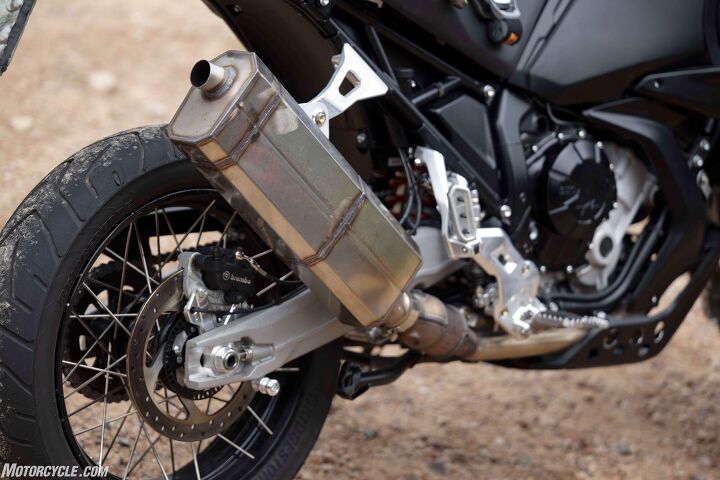
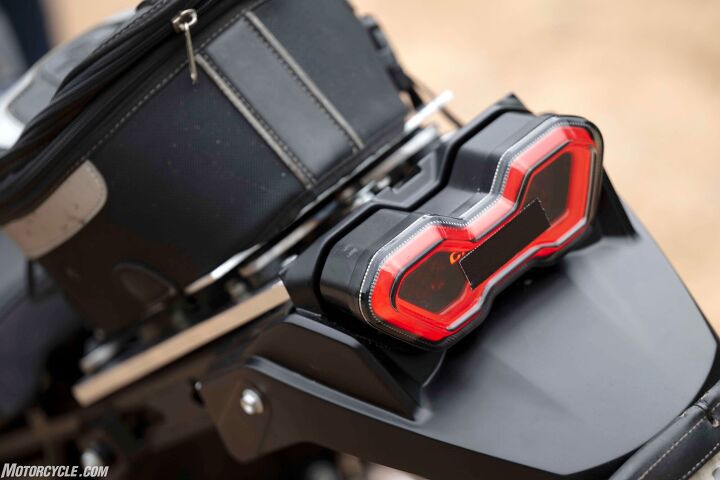
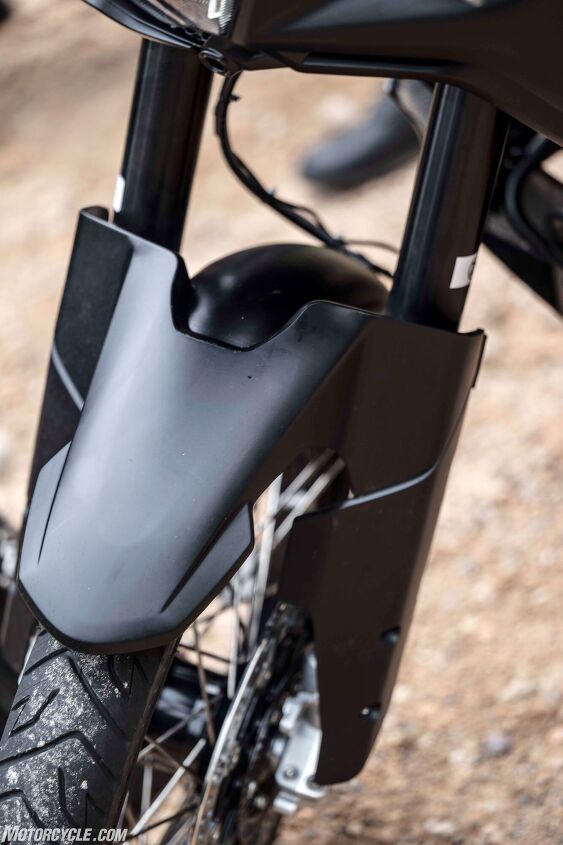
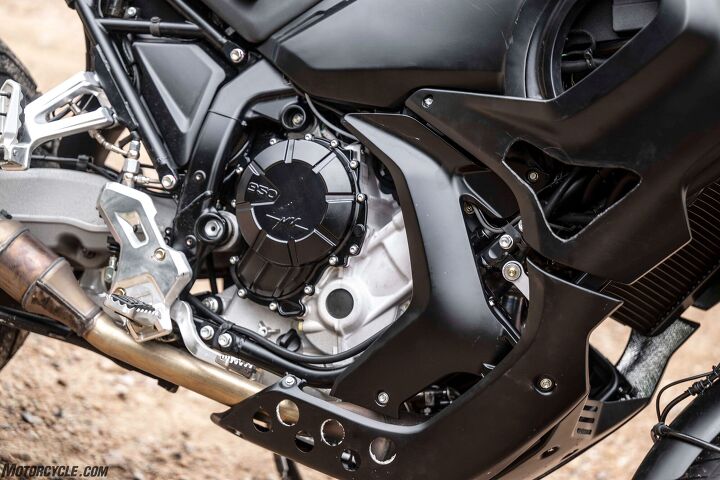
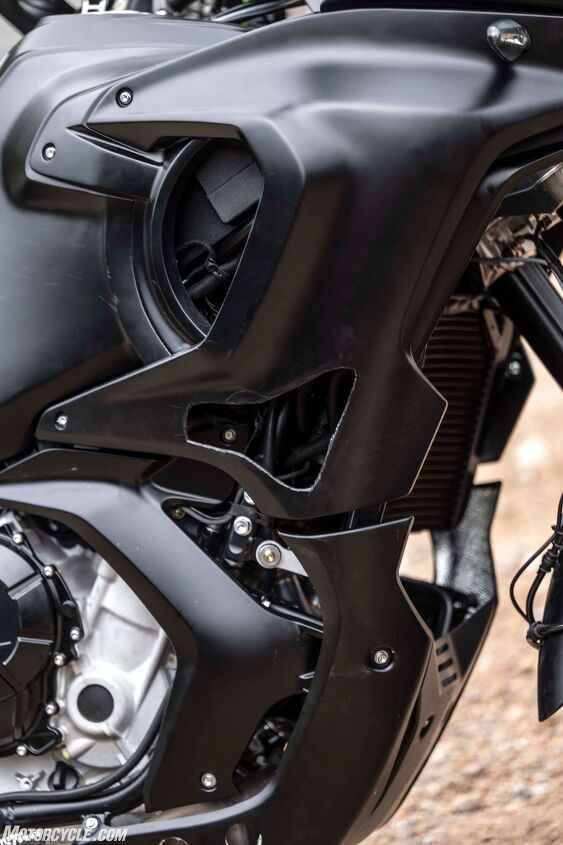
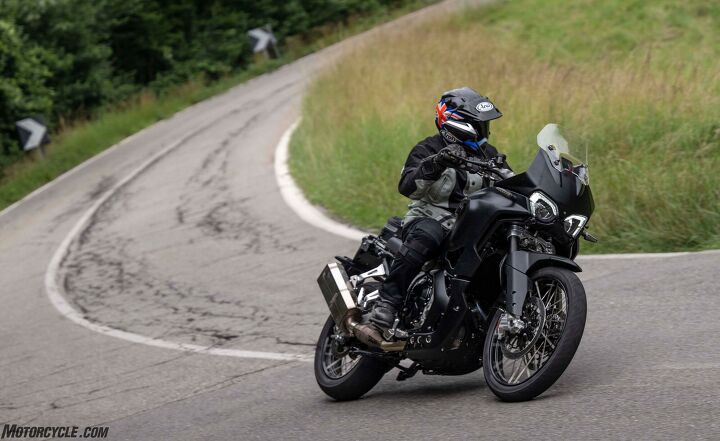
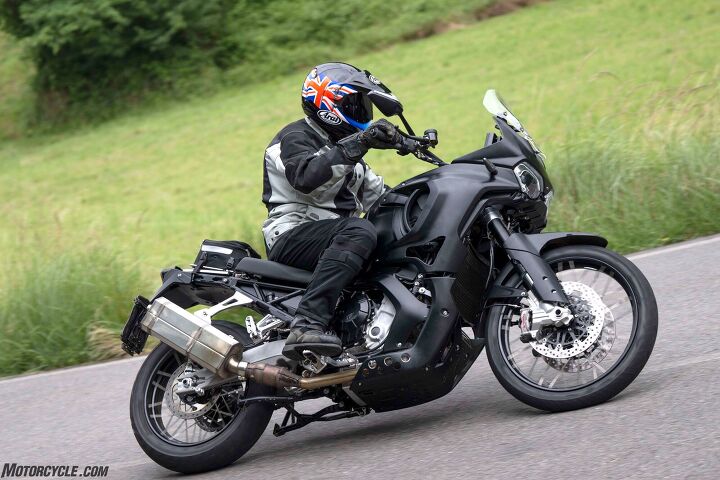
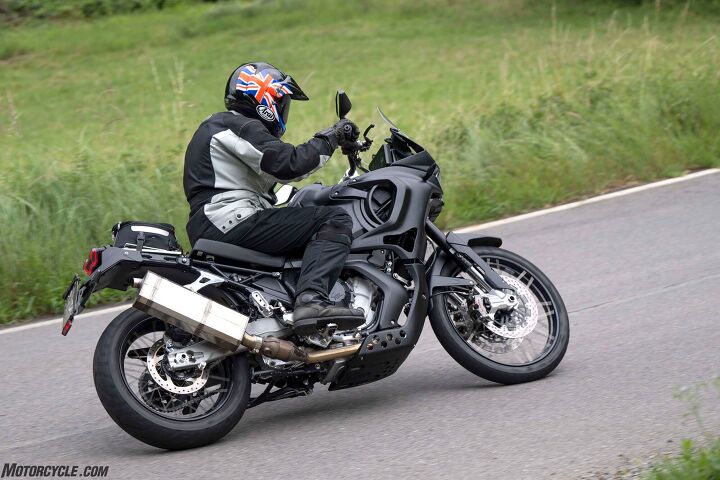
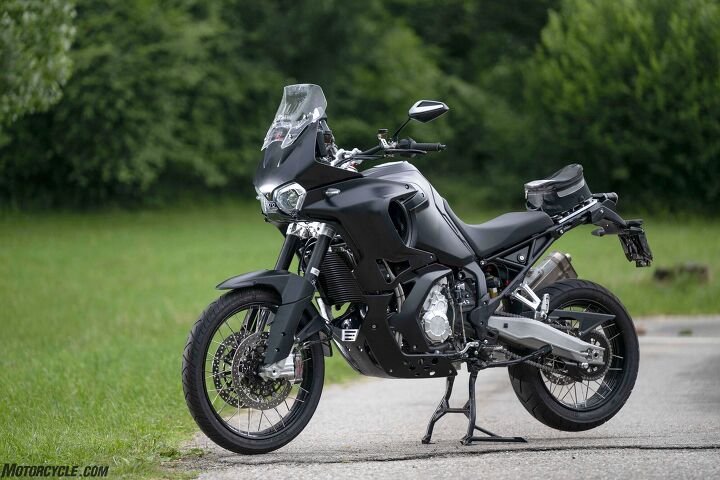
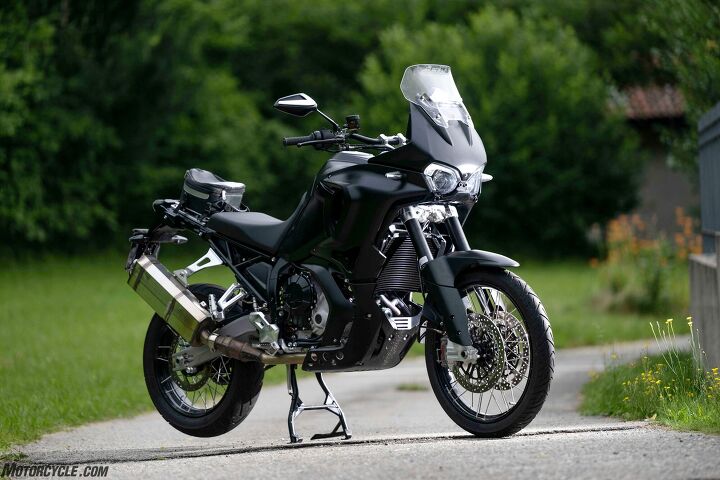
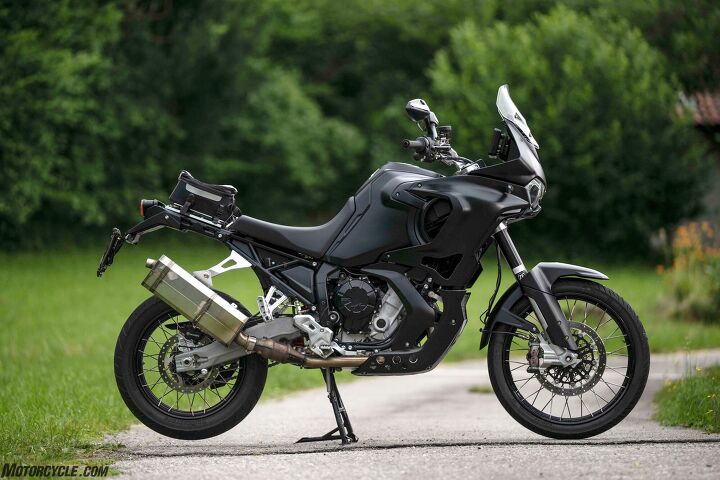
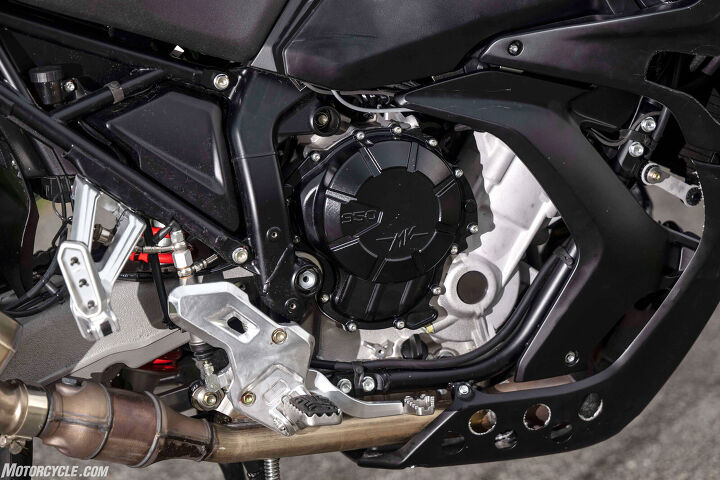
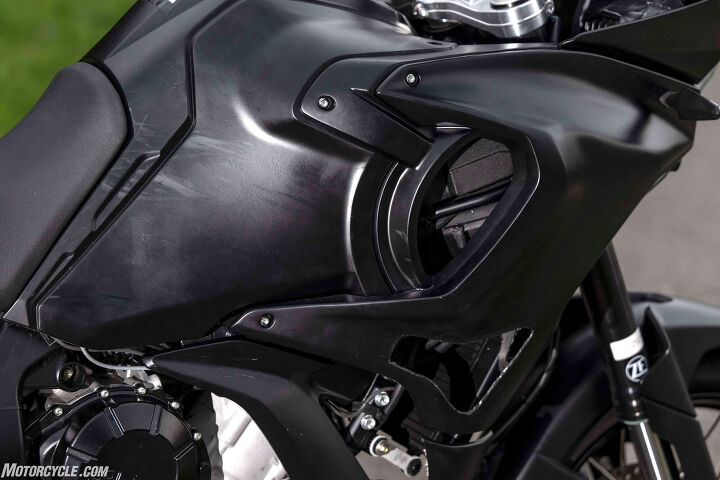
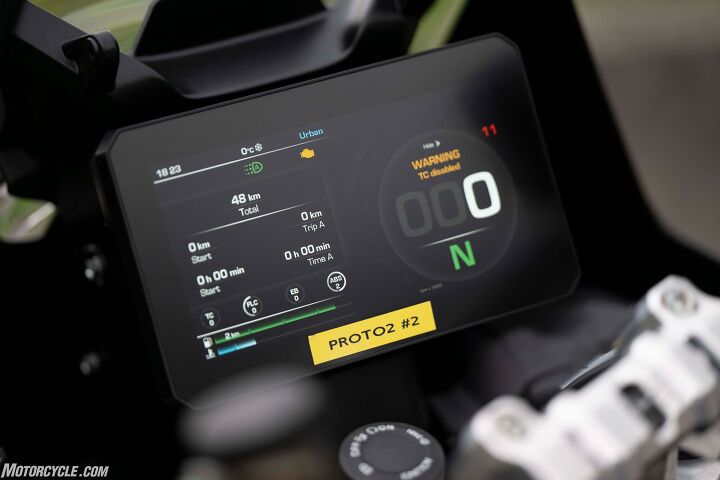
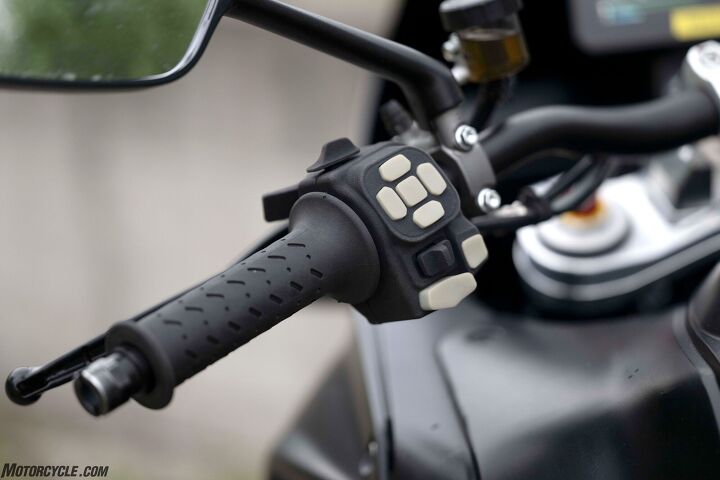
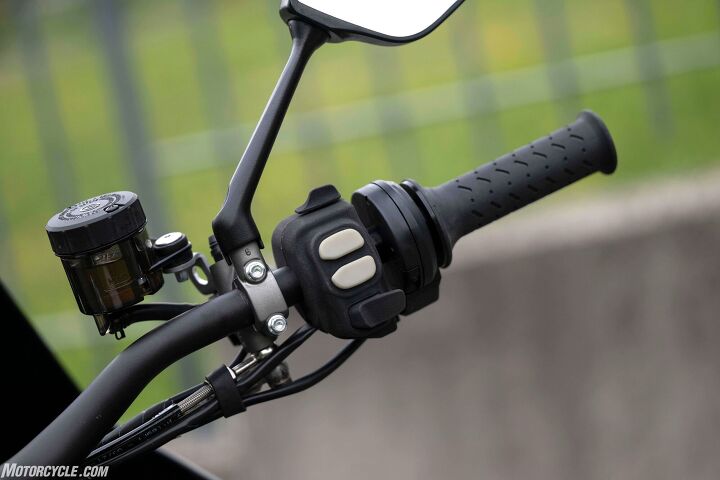
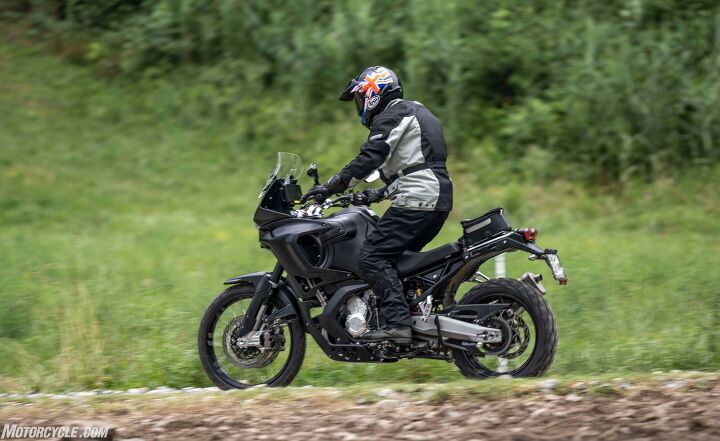

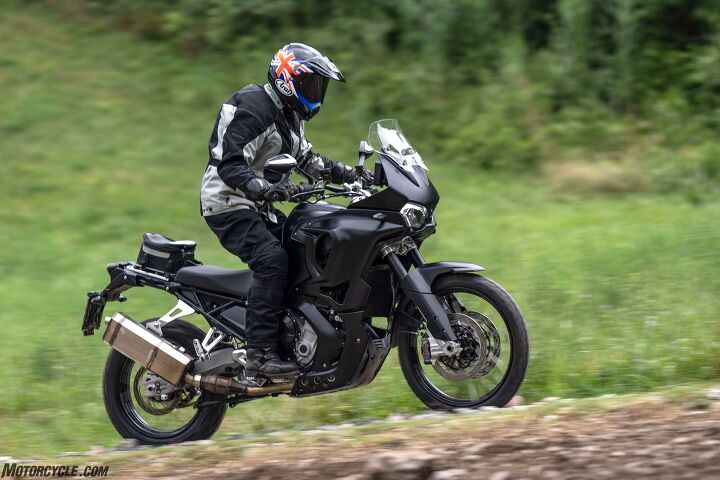
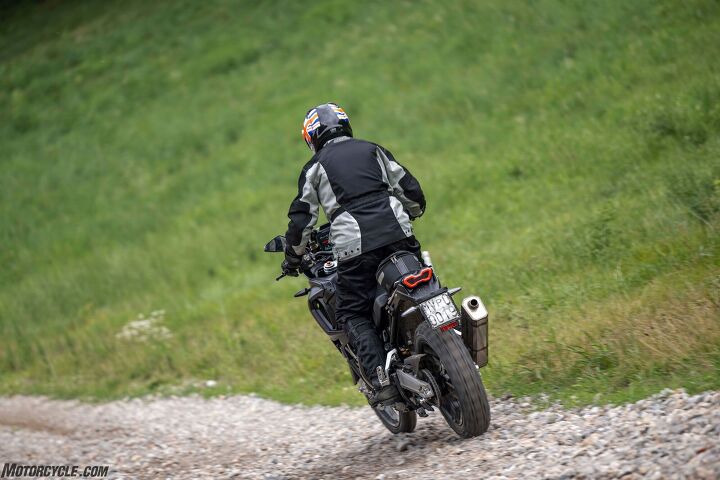
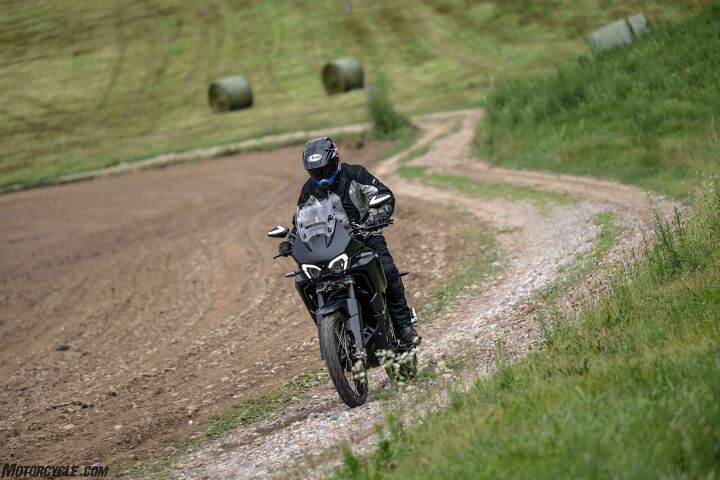
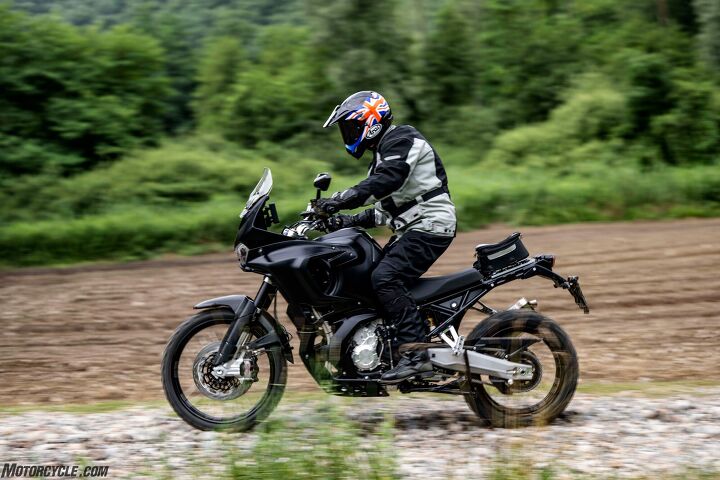
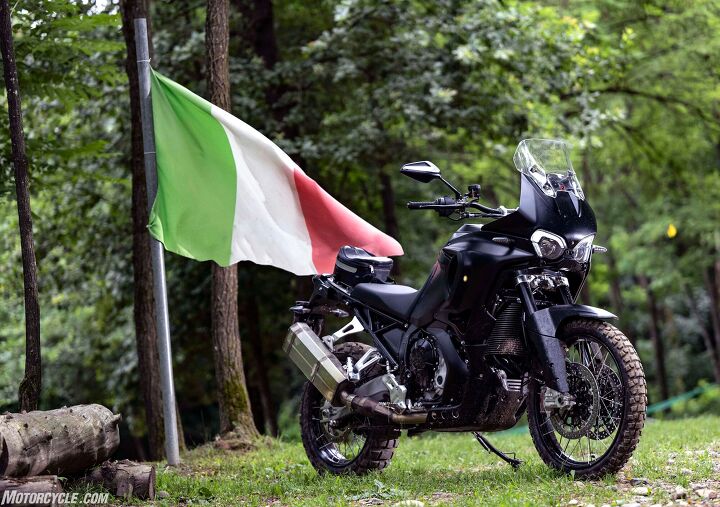
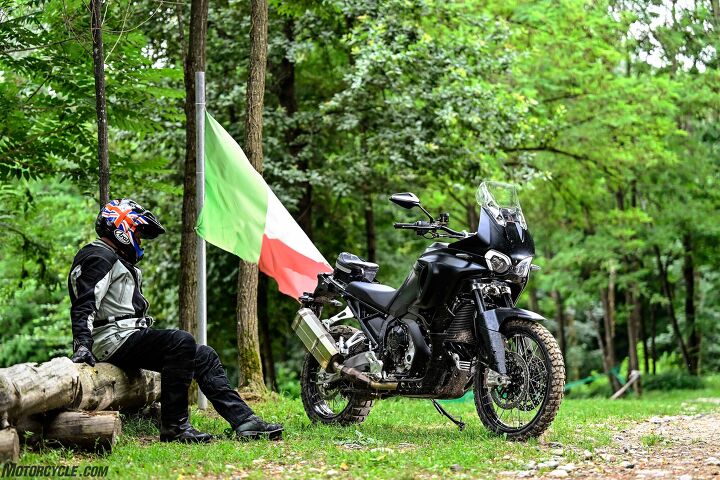
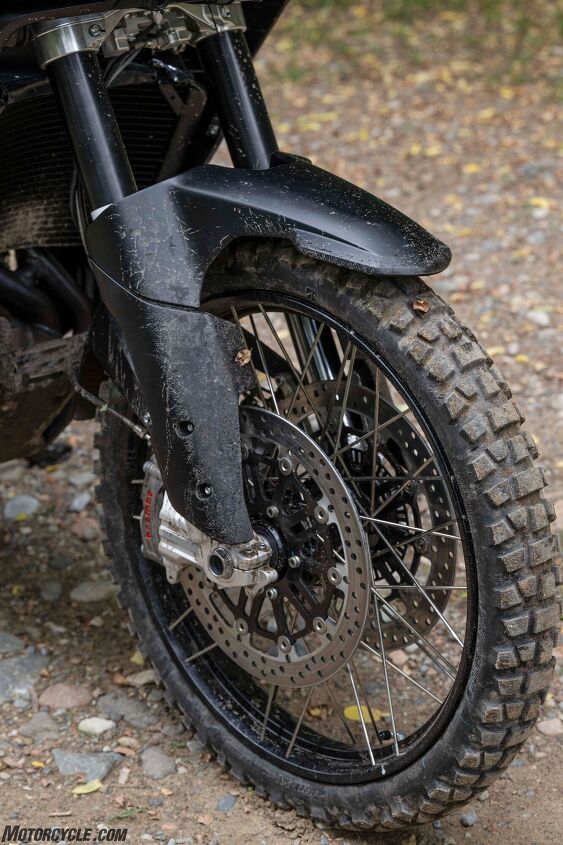
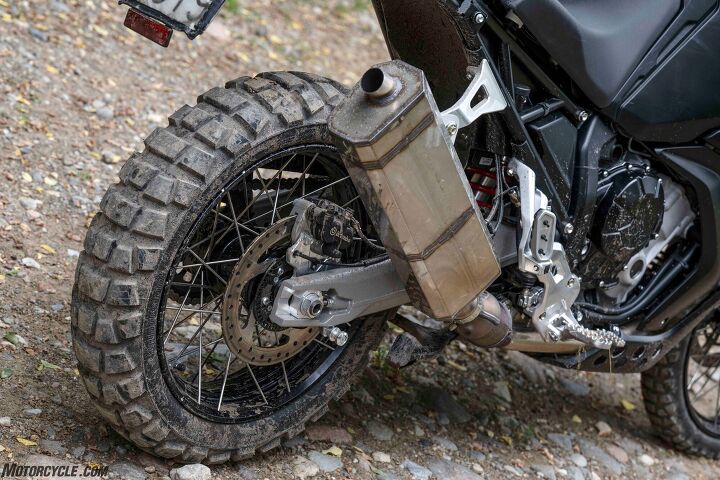
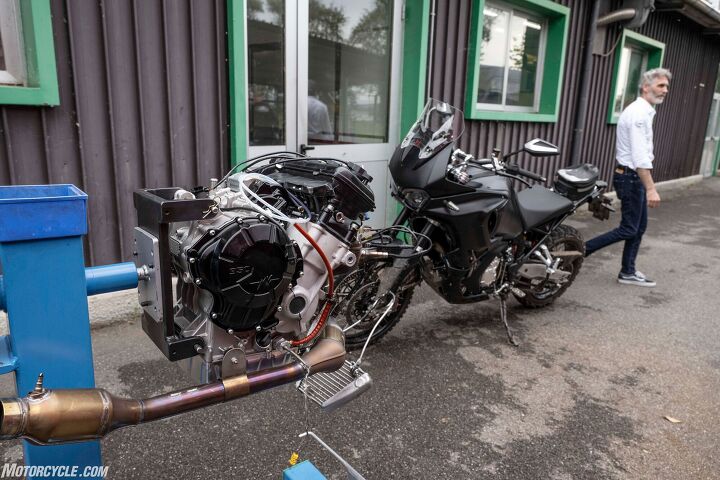
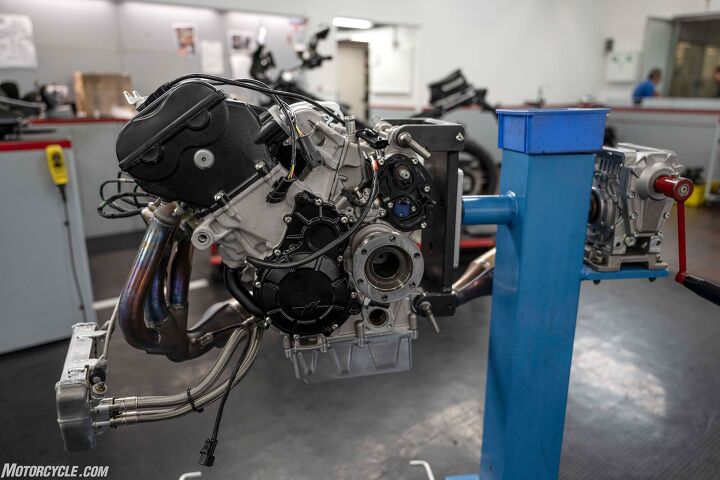
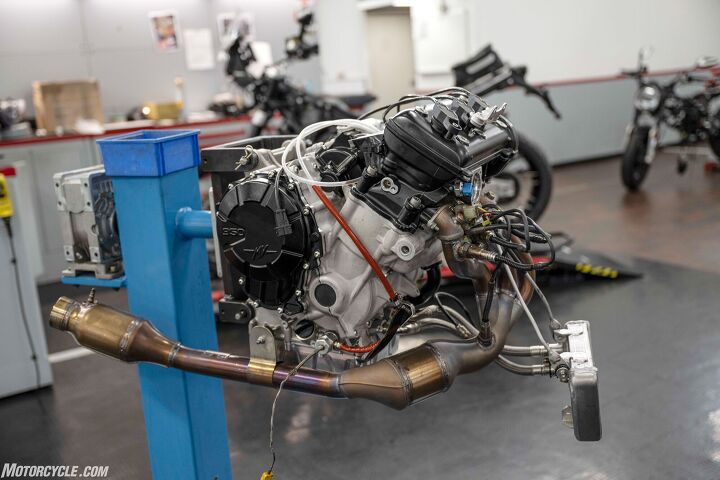
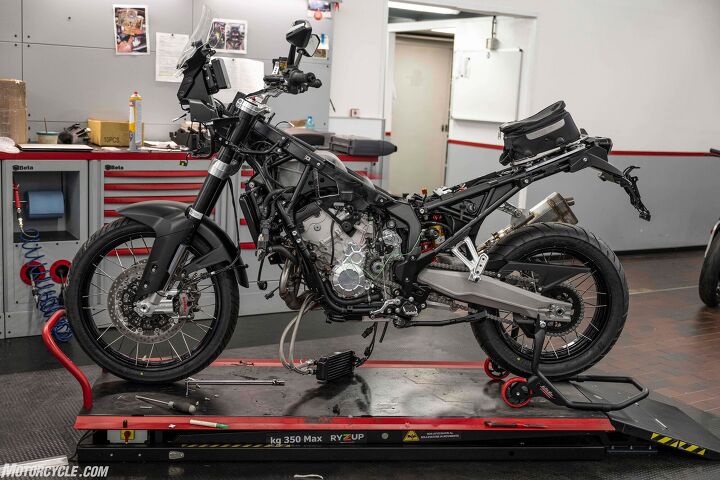
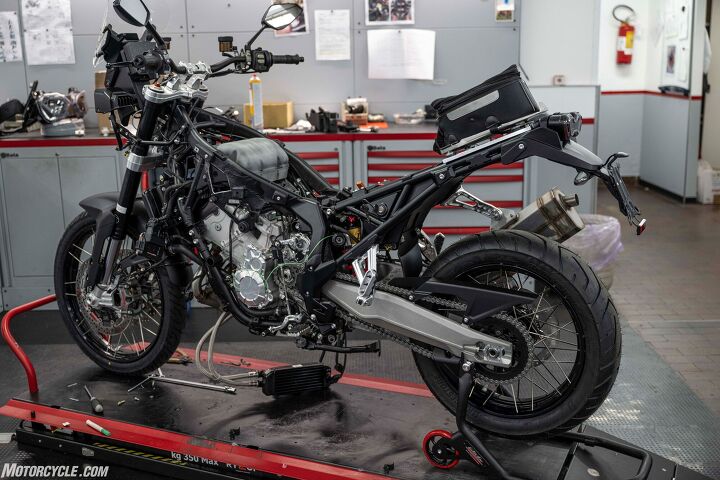
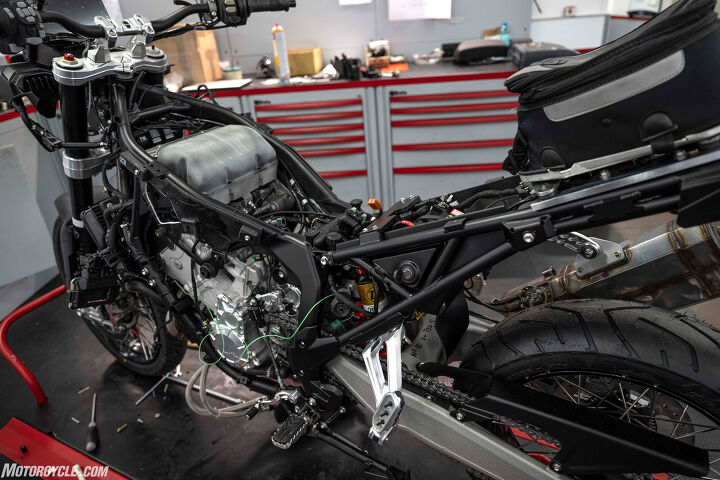
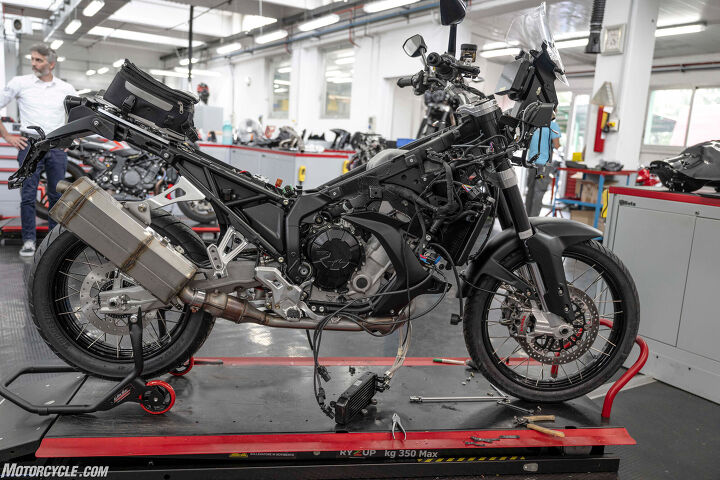
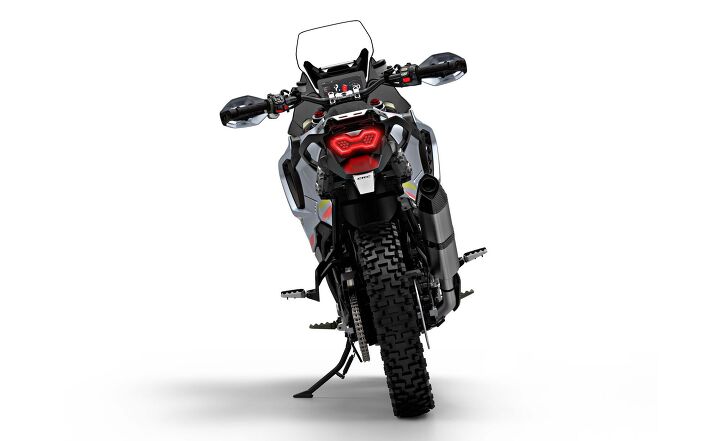
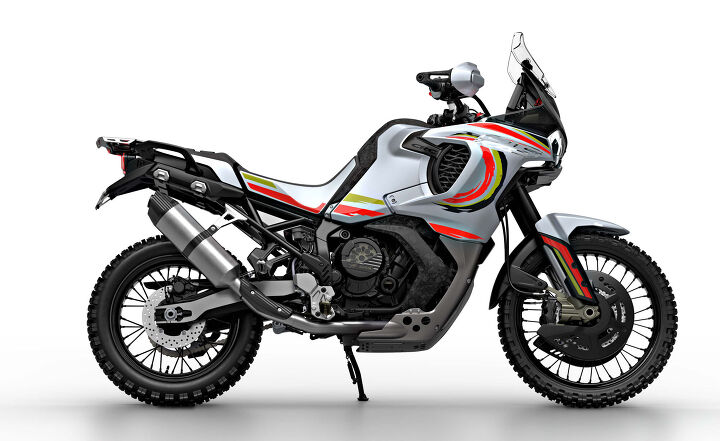
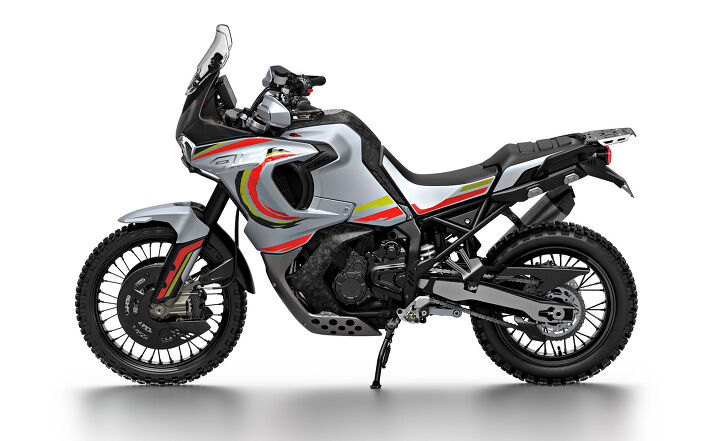
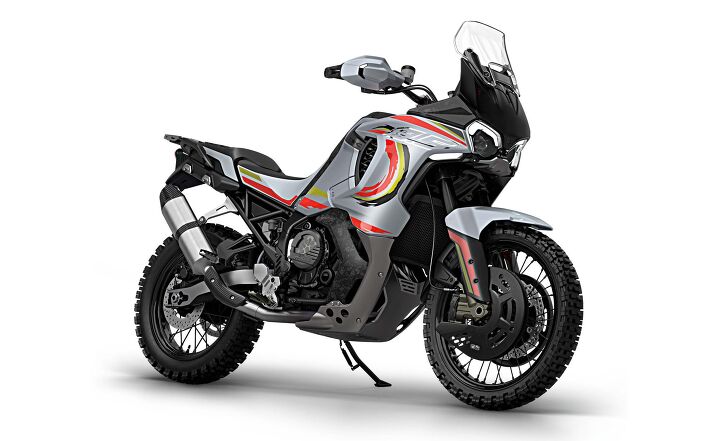
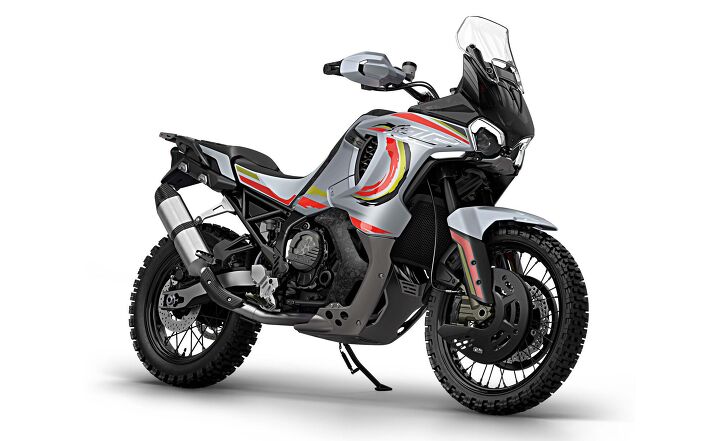
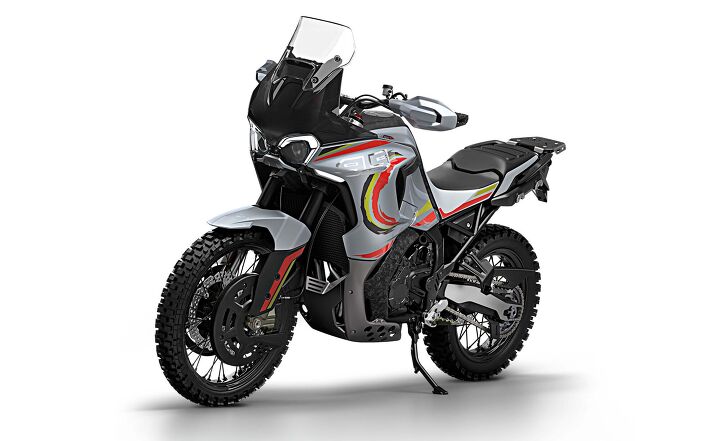
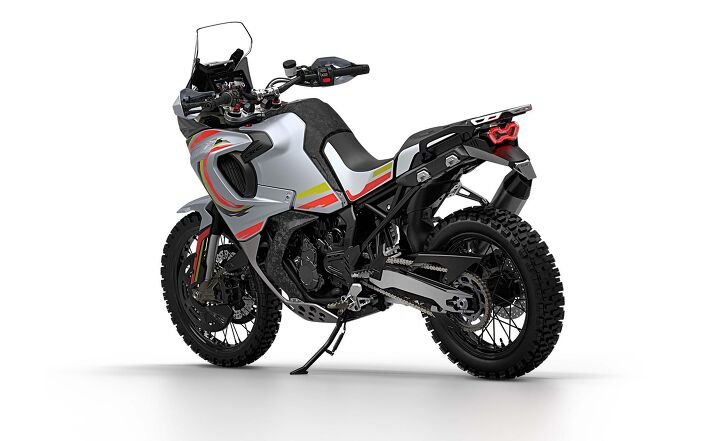
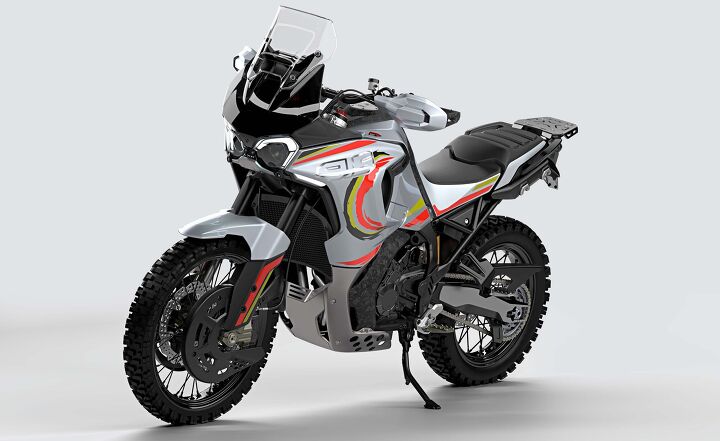
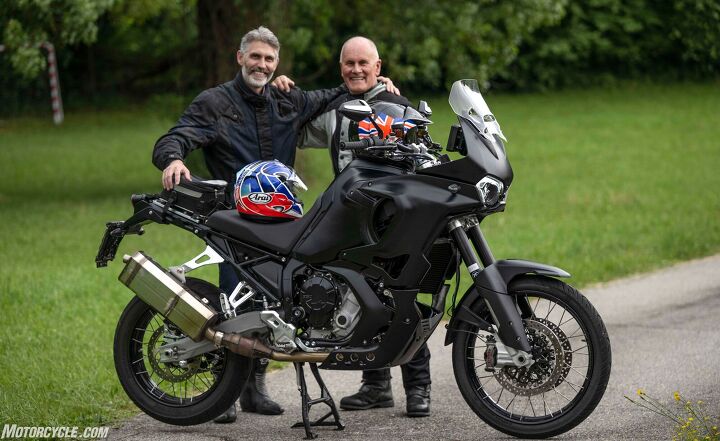
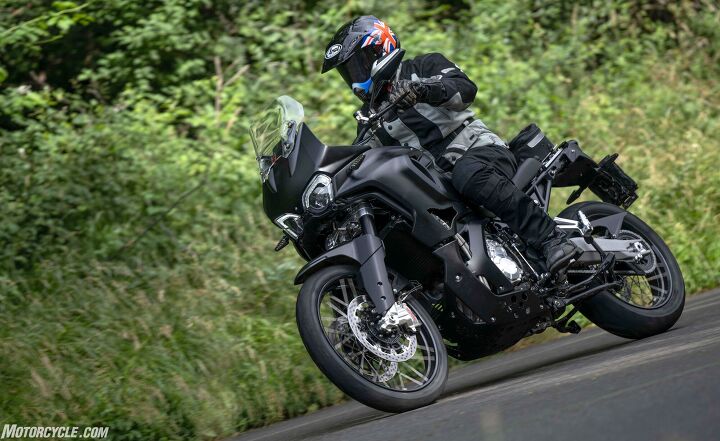
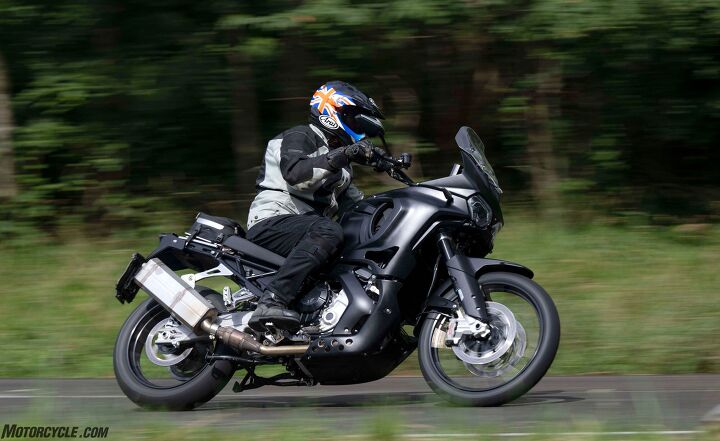
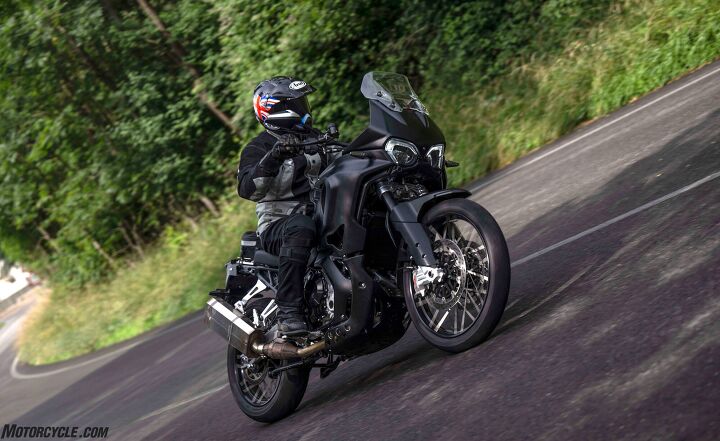
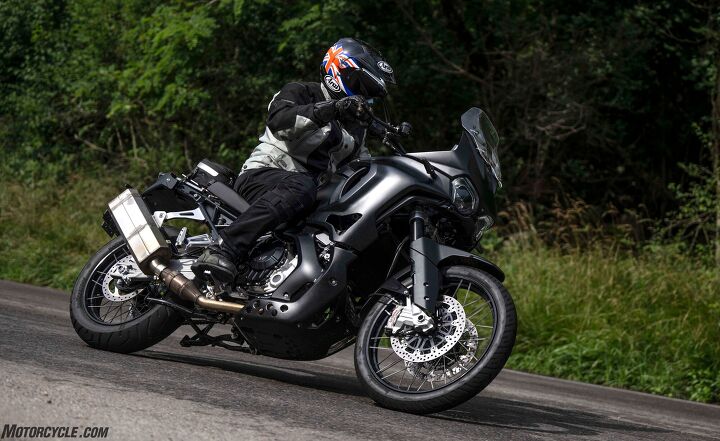
Become a Motorcycle.com insider. Get the latest motorcycle news first by subscribing to our newsletter here.
The post 2023 Lucky Explorer 9.5 Prototype Test appeared first on Motorcycle.com.
Copyright
© Motorcycle.com


